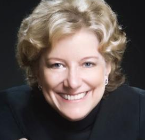Woodstocked

Why does the Woodstock music festival, held 40 years ago this weekend, still matter? Perhaps it's because it was "half a million strong"—mega-viral before flashmobs and the Web. "Woodstock had to have been one of the earliest examples of a viral event—long pre-dating blast faxes, mass emails, Web ads, the blogosphere, texting and tweeting," says Robert Goldstein, NPR's music librarian."Somehow, 40 years ago, word spread from person to person about a fabulous outdoor rock festival at a farm a few hours outside of New York City."
Woodstock also was a community of like-minded souls formed at the edges of the cultural mainstream. Today, there is no mainstream, and crowds are more apt to form digitally; in 1969, crowds were only physical—defined less by their collaborative networking potential than by their power to disrupt the status quo. Today, hundreds of thousands of communities are forming and communicating with each other, quickly, over the Web. Back in the summer of 1969, crowd-to-crowd communication did not exist and was beyond the realm of the imaginable. Woodstock was the original flashmob, shocking in both its size and its ability to rapidly self-organize. "This was a spontaneous, pre-Web community of the anti-Establishment, a kind of peaceful protest and celebration all wrapped into one," says Henry Diltz, a photographer who captured most of the festival in a series of iconic images.
Diltz also told the BBC in a recent interview that Woodstock's crowd-power gave the anti-Establishment a platform that signaled a change in the American spirit. One of Diltz's most vivid memories is of Jimi Hendrix playing the Star Spangled Banner:
It was just a transfixing moment."
(Poster: Woodstock Music & Art Fair, 1969)
Labels: bbc, crowds, crowdsourcing, henry diltz, jimi hendrix, npr, social media, social networking, star spangled banner, viral video, wisdom of crowds, woodstock

0 Comments:
Post a Comment
Subscribe to Post Comments [Atom]
<< Home